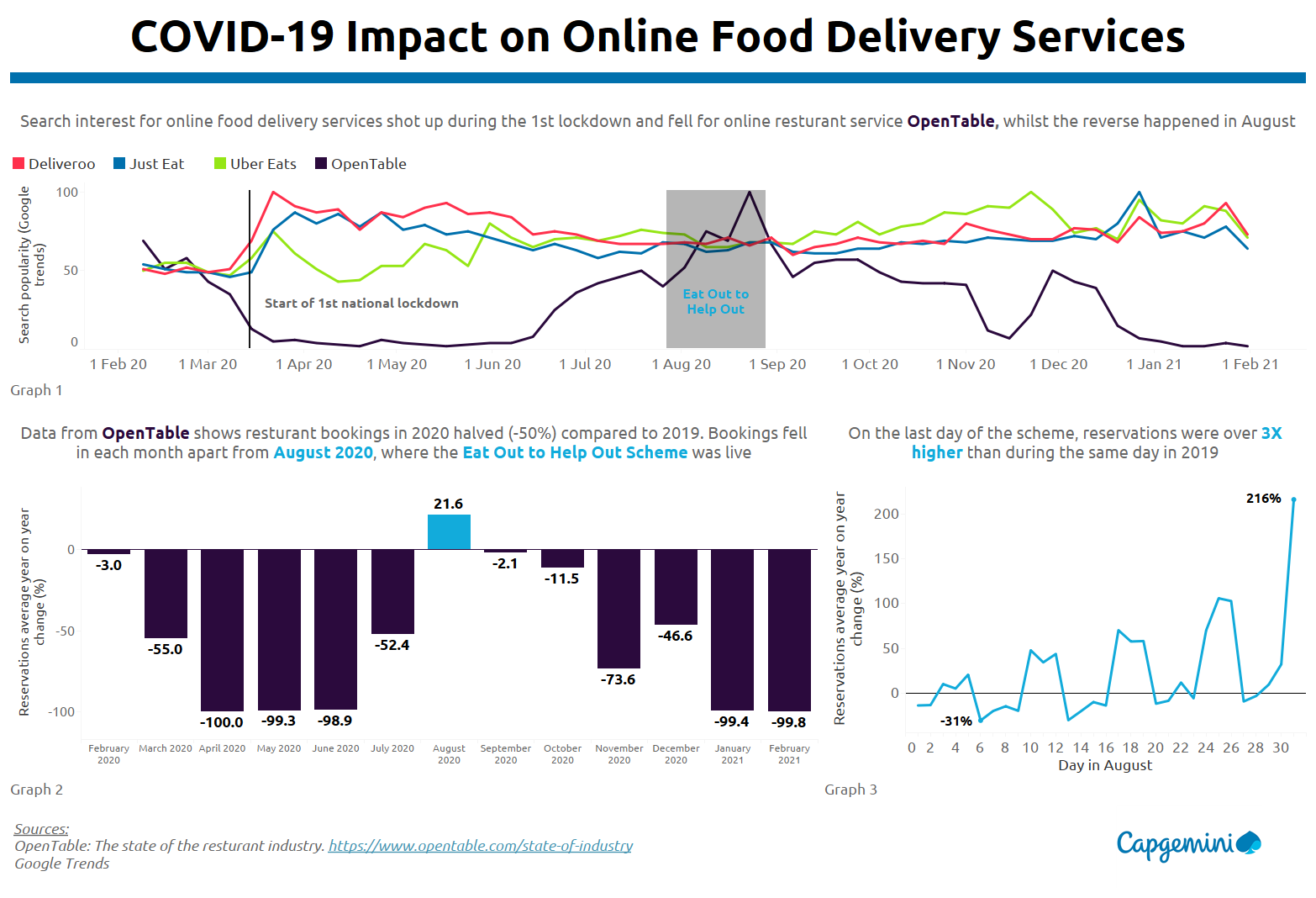Food consumption and shopping behaviour shifted massively because of Covid-19. With more people ordering their groceries online, retailers found themselves challenged to fulfil orders. With restaurants staying closed, the wait for online grocery ordering slots lengthening and households growing weary of home cooking, individuals started turning to takeout As a result, online food delivery services like Deliveroo saw a big increase in search popularity (graph 1) and it didn’t take long for the likes of Deliveroo to realise the opportunity of leveraging its network to partner with retailers to deliver groceries.

Deliveroo partnered with major retailers like Waitrose, Sainsburys, Aldi, Co-Op and Morrisons to deliver groceries to households within a short amount of time. Uber Eats also saw a rise in popularity after partnering with Sainsburys in October.
On the flipside and as expected, consumers took every opportunity to eat out when lockdown restrictions eased. The Eat-Out to Help-Out scheme in August proved to be quite successful during that time and with restaurants only allowing customers to eat with a booking and no walk-ins, OpenTable saw an in bookings compared to LY in August (graph 2), which was the only positive year on year increase in restaurant bookings for the whole year. Consumers rushed to make the best out of the scheme that saw the biggest peak in restaurant bookings on the last day of the offer (graph 3) (although it was later announced that the scheme would get extended ).
With lockdown restrictions still in place and consumers’ behaviour shifting towards convenience and speed of delivery, it can only be assumed that the rise of third party online food delivery services will not be slowing down any time soon and we expect to see a few new players entering the market too.







































